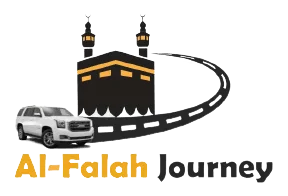The Hira Cultural District is a notable cultural and historical landmark in Makkah al-
Mukarramah, Saudi Arabia. Located at the foot of Mount Hira, where Prophet Muhammad
(PBUH) received the first revelation from Allah, it lies close to Masjid al-Haram and along
the road connecting Mecca and Taif. Easily accessible for visitors year-round, the district
features museums, cultural exhibitions, and educational spaces. For pilgrims performing
Hajj or Umrah, or visitors exploring the city, the Hira Cultural District provides a unique
opportunity to connect personally with the spiritual and historical heritage of Makkah.
What You Can Explore in the Hira Cultural District
Hira Cultural District in Makkah offers a wide range of experiences. Museums showcase the
life of Prophet Muhammad (PBUH), early Islamic history, and the story of the Quran
revelation. Visitors can view original Quran manuscripts, historical artifacts, and displays
highlighting Saudi Arabia’s rich Islamic heritage. Modern technologies enhance the
experience, including digital guides, interactive screens, and augmented reality features that
allow passengers and tourists to explore the history of Jabal Hira or the Cave of Hira more
deeply.
Walking paths are well-marked, making it easy for Muslims performing pilgrimage rites to
navigate. Various cafes and restaurants allow visitors to pause, reflect, or discuss the
cultural and spiritual significance of the district. Signage provides clear directions and
historical context, ensuring that everyone, from first-time visitors to experienced tourists,
can appreciate the full unique cultural experience of the district.
Key Attractions of Hira Cultural District
The Hira Cultural District in Makkah offers a blend of cultural, spiritual, and educational
experiences for visitors. At its heart is the Visitor Center, which introduces the district,
explains its historical and geographical significance, and guides pilgrims and tourists on
how to explore the area. The Revelation Exhibition highlights the first divine message
received by Prophet Muhammad (PBUH) in the Cave of Hira, showcasing his early life and
the support of Lady Khadijah (RA) through interactive displays.
The Qur’an Museum houses rare manuscripts, artifacts, and modern technologies,
demonstrating the Quran’s universal impact and its role in Islamic history. The Cultural
Library provides in-depth resources on Makkah, Mount Hira, the Cave of Hira, and the life of
the Prophet, catering to researchers, students, and visitors.
Additional features include Hira Garden, mountain cabins with terraces, cafes and
restaurants, and the Saudi Coffee Museum. A paved path leads to the Cave of Hira, complete
with signage, rest areas, and safety measures, ensuring a meaningful and comfortable visit.
Historical Significance of Mount Hira
Mount Hira in Makkah is a cornerstone of early days of Islam. The Prophet’s retreats to the
cave for reflection and prayer highlight the importance of patience, devotion, and faith in
Allah. The revelation here connects the Hira Cultural District to the heart of Islam, giving
visitors a connection to the Prophet’s experience.
The Qur’an itself says:
“Read in the name of your Lord who created” (Surah Al-Alaq 96:1).
The Cave of Hira: Where the First Revelation Happened
The Hira Cave, situated atop Mount Hira, is the highlight of the district. Prophet Muhammad
(PBUH) often went here for quiet reflection and prayer. It was in this cave that Angel Jibreel
(AS) delivered the first revelation from Allah. Visitors can climb to the cave, take time to
reflect, and experience the spiritual importance of this historic site. This visit gives a deep
connection to the Prophet’s life and the beginning of Islamic history.
Revelation Exhibition: Learning the Story of Islam
Next to the cave is the Revelation Exhibition, which explains the story of the first message
from Allah. Exhibits include the early life of Prophet Muhammad (PBUH), his moments of
reflection, and the transformative experience of receiving the Qur’an. Visitors can see
interactive displays that bring history to life and provide an understanding of Islam’s
origins.
Quran Museum: Exploring Islamic Scripture
The Qur’an Museum in the Hira Cultural District displays rare manuscripts, historical
artifacts, and educational panels. It shows the journey of the holy Quran from the beginning
of the Prophetic era to today. Muslims and tourists alike can learn about Islamic teachings,
the history of the Qur’an, and the impact of Prophet Muhammad’s (PBUH) message on the
world.
Hira Library and Cultural Center
The cultural library offers books and resources on Islamic history, Saudi culture, and the life
of Prophet Muhammad (PBUH). It provides researchers, students, and visitors a space to
explore Islamic teachings in depth. Nearby, Hira Park and surrounding grounds offer
peaceful areas for prayer, rest, and reflection, creating a harmonious blend of learning and
spiritual contemplation.
Visiting the District Today: Facilities and Comfort
The Hira Cultural District is built to welcome visitors safely and comfortably. Pathways,
signage, and guided tours make it easy to navigate. Prayer spaces, seating areas, and
restrooms provide convenience while maintaining the spiritual atmosphere. For pilgrims
performing Hajj or Umrah, visiting the district adds a reflective pause to their journey and
strengthens their connection to Islamic history.
Cultural Events and Programs
Throughout the year, the district hosts exhibitions, workshops, and lectures about the
Qur’an, the life of Prophet Muhammad (PBUH), and Saudia culture. Special programs during
Ramadan and Eid provide immersive experiences, allowing visitors to understand Islamic
teachings and heritage. These programs help tourists engage actively with the history,
culture, and spirituality of the district.
Tips for Visitors
Plan ahead and visit early to avoid crowds, especially during peak pilgrimage seasons. The
district is generally open from 7:30 AM to midnight. Booking tickets online and joining
guided tours with audio guides in multiple languages can enrich your experience. Respect
the Islamic dress code and maintain appropriate behavior. Nearby attractions like Masjid al-
Haram and Mount Abu Qubays can be combined for a fuller visit. restaurants, prayer areas,
and rest spots are available throughout the district for your comfort.
Conclusion
The Hira Cultural District is more than a place to visit; it is a journey through Islamic history, culture, and spirituality. From climbing Mount Hira to exploring the Cave of Hira, visiting the Museum of the Holy Quran, and participating in rich cultural and historical programs, visitors can feel the life and teachings of Prophet Muhammad ﷺ.
For those performing Hajj or Umrah, it strengthens their spiritual journey, while for tourists, it provides insight into Saudi Arabia’s Islamic heritage. Many travelers choose curated experiences, such as those arranged by Alfalah Journey, to move seamlessly between the district and nearby sacred sites, ensuring a reflective and enriching visit that blends history, faith, and culture.

